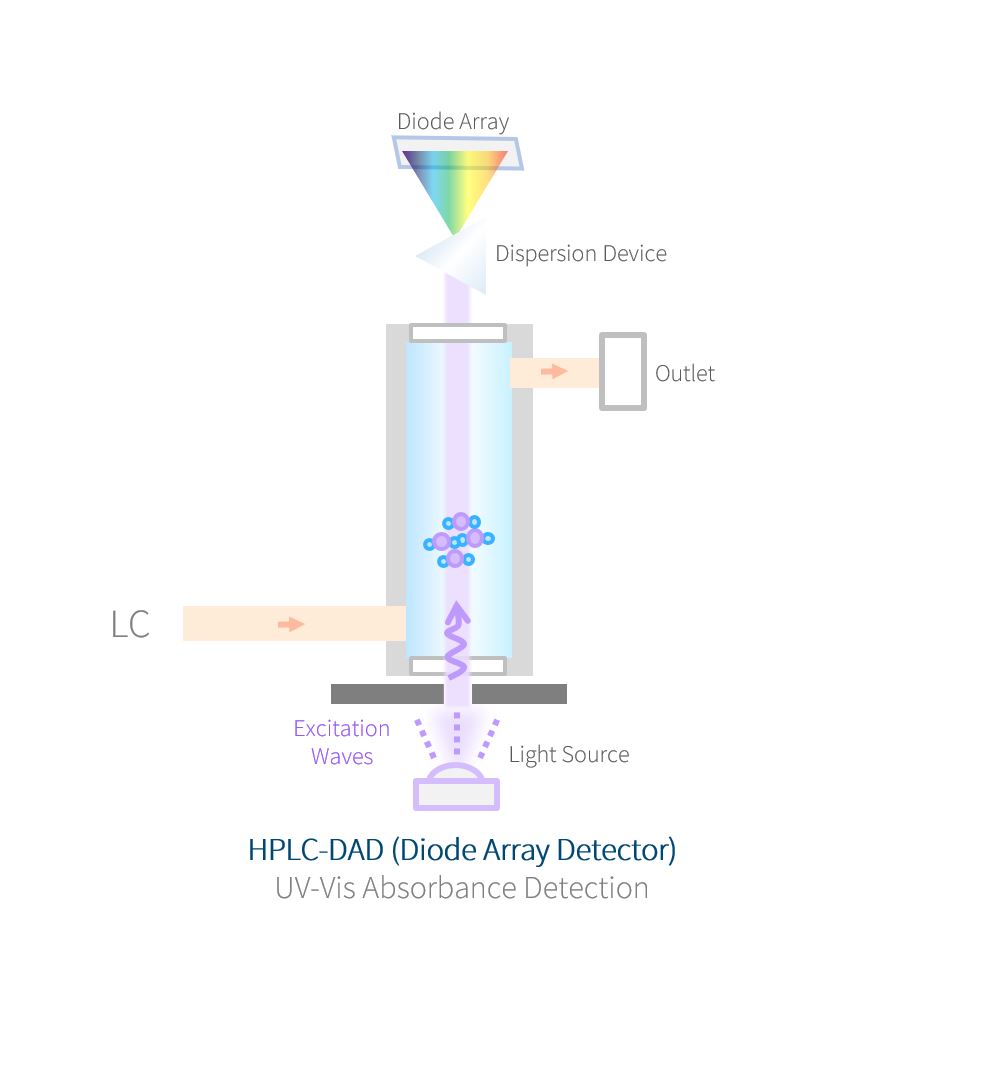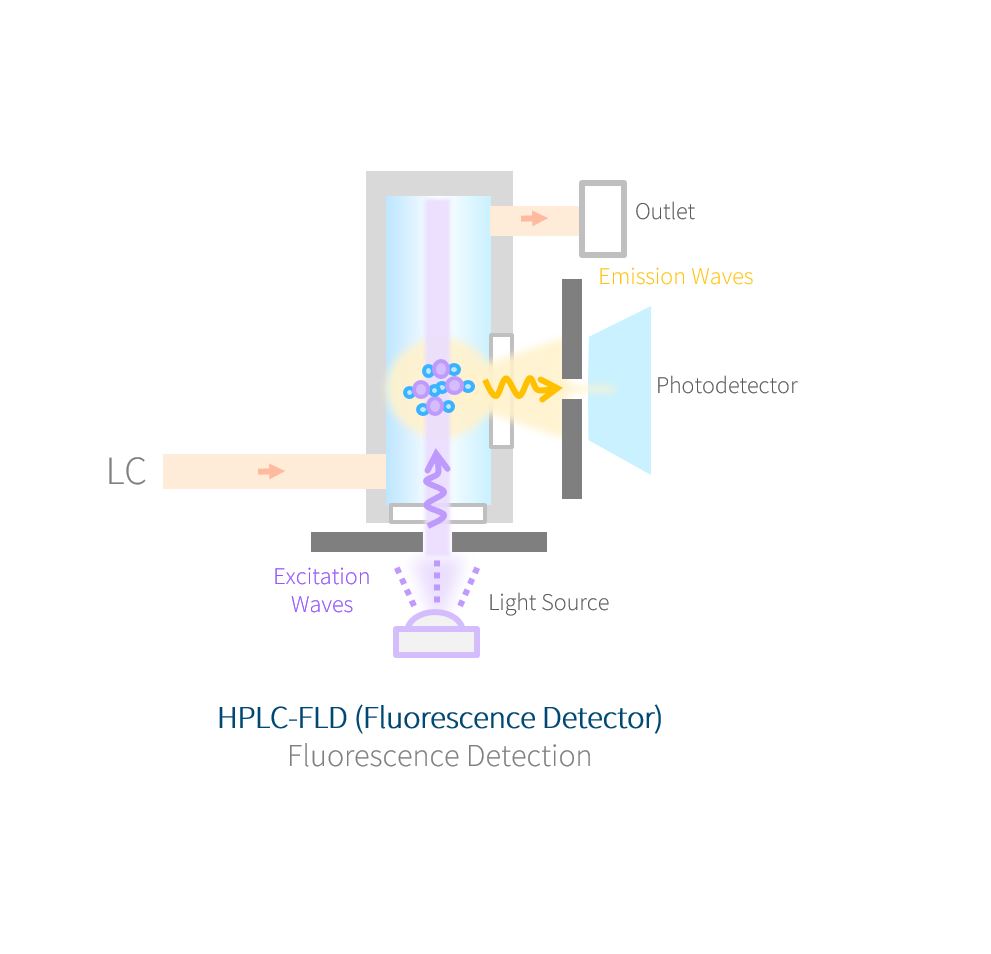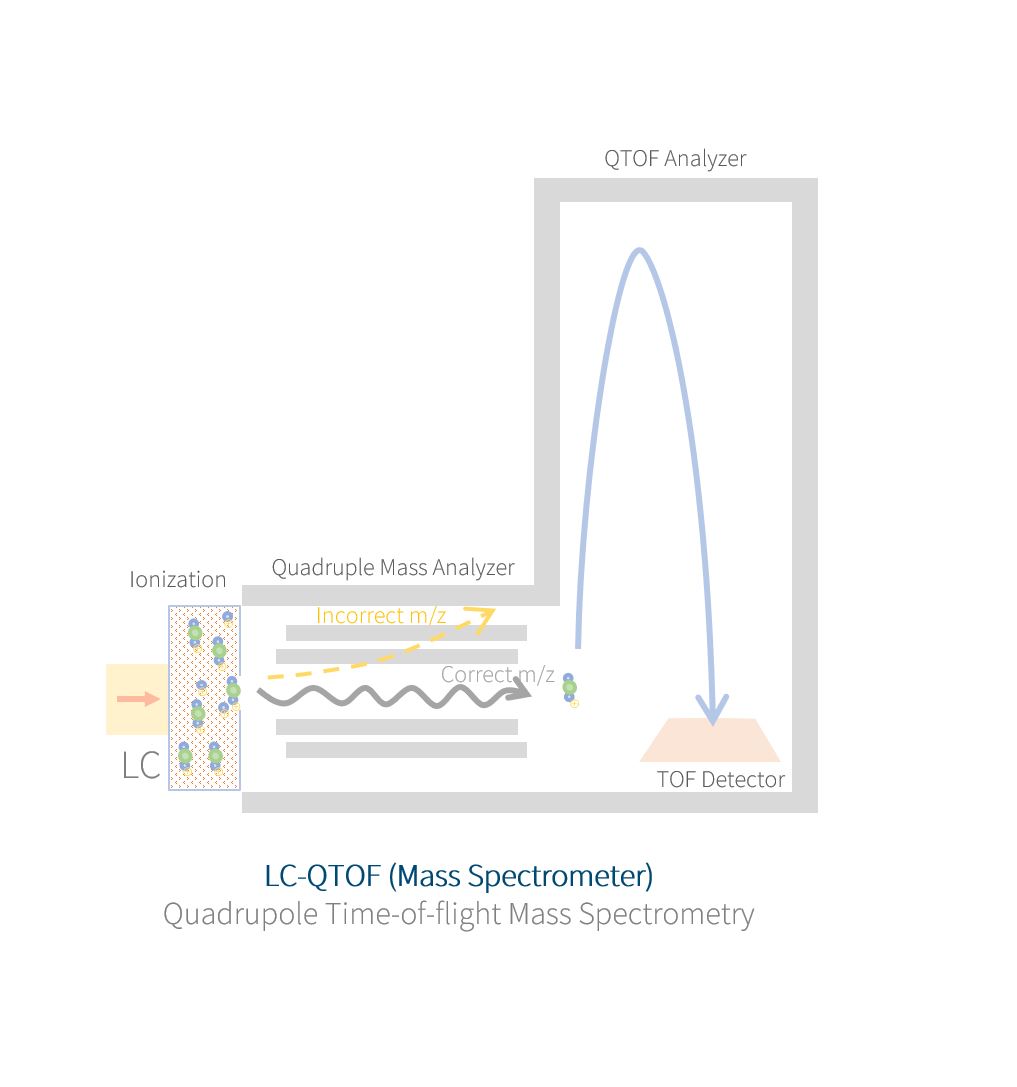HPLC-DAD (UV Absorption Spectroscopy)
Liquid chromatography equipped with photodiode-array detection (HPLC-DAD) allows for the detection of components with unique UV-Vis absorption characteristics (typically organic compounds with aromatic structures).
The basic principle of photodiode-array detectors (DAD) involves passing a beam of UV-Vis light through a HPLC column effluent, which contains separated compounds. The light is absorbed by the sample, and the amount of light absorbed at different wavelengths is recorded by the diode array detector. The recorded absorbance spectra are then used to identify and quantify the separated compounds based on their unique UV-Vis spectra. The advantages of DAD include the ability to collect spectra over a broad range of wavelengths, which allows for more accurate identification and quantification of complex mixtures of compounds.



